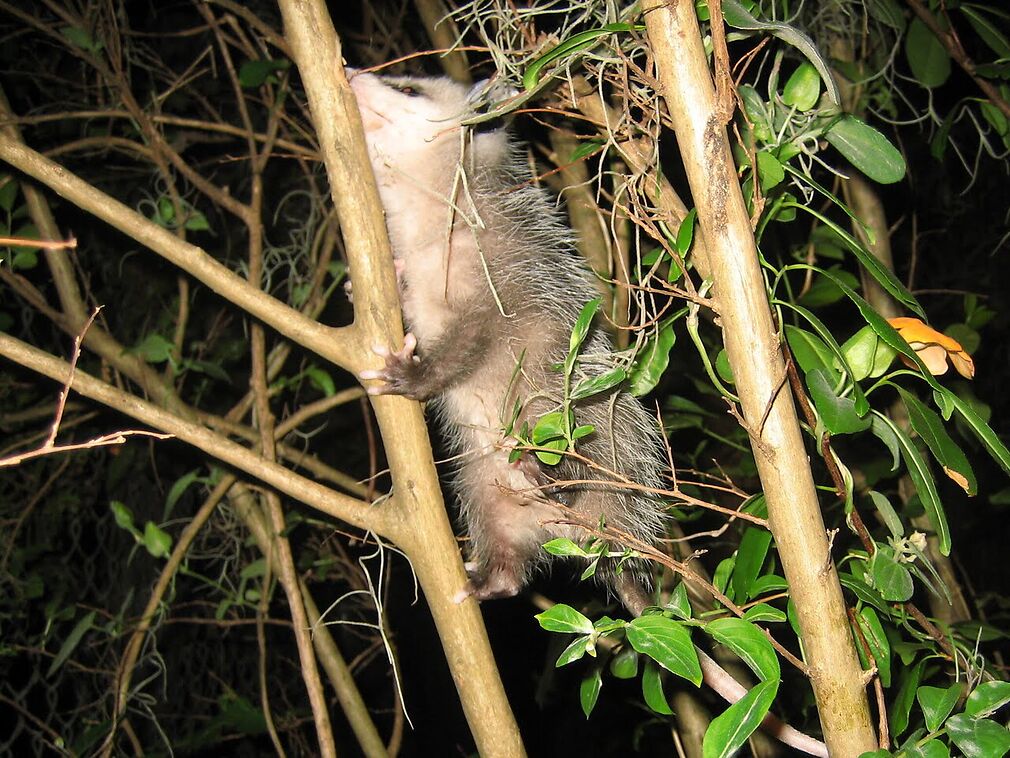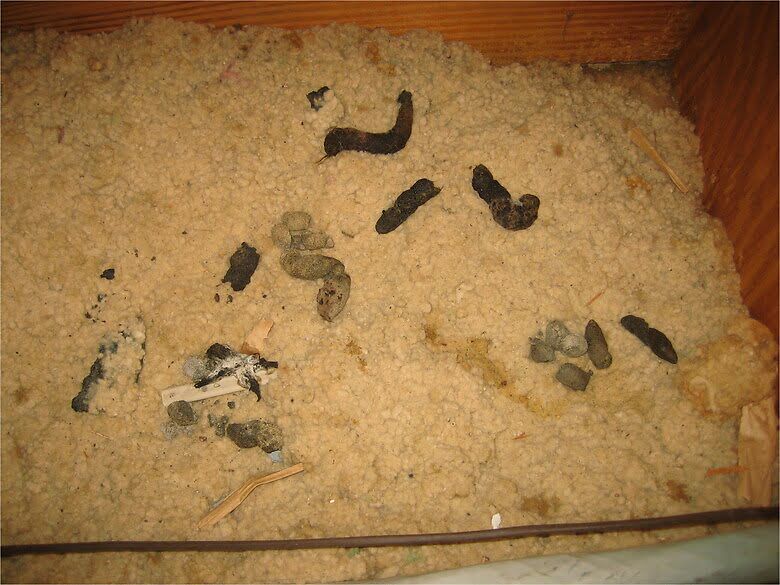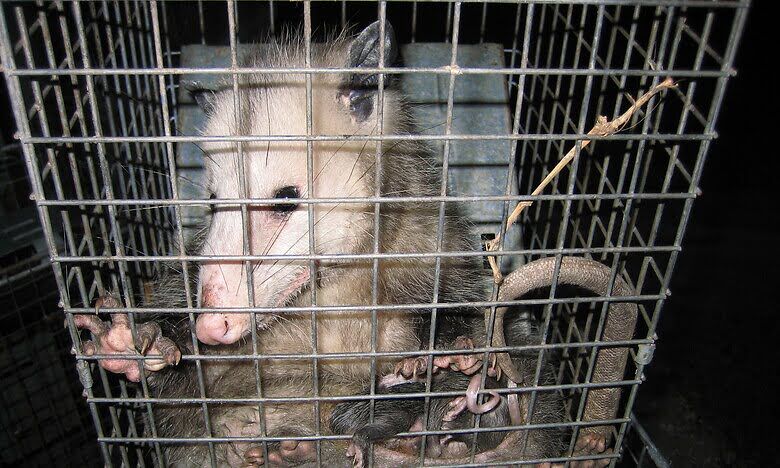About Nuisance Opossums
Opossums are often docile until provoked. They are natural scavengers that live off of hunting for food and shelter. The very nature of this scavenger-like behavior can make opossums a nuisance to humans.
If not controlled, opossums can bring unwanted parasites into your home. Opossums are known carriers of fleas, ticks, lice, and other parasites. They can also cause countless amounts of damage to housing insulation, siding, and structure.

Biology
There are many different species of opossums around the world – sixty, to be exact. The most common is the Virginia Opossum. They are the only marsupial (pouched animal) in North America. Here are some facts about opossums:
- Size – Opossums are about the size of a large house cat, ranging from 4 – 30 pounds, and can grow up to 15 – 20 inches in length.
- Abilities – They have sharp claws that help them dig into trees when they climb and sharp teeth that allow them to effectively rip off their prey’s flesh. They have opposable thumbs, which give them the ability to carry and move objects like primates.
- Physical Features – Notable features of opossums include a grayish-brown fur coat, long pointy snouts, hairless ears, and round dark eyes. They also have hairless ears and pink noses at the end of their snouts. Their mouth carries 48-50 teeth, more than any mammal in North America.
Problems They Cause
Aggressiveness
Possums are not typically aggressive. They are more docile in nature, but like any animal, they do possess defensive mechanisms when threatened. When cornered, they will often sit back and crouch down with their mouths wide open making as many of their teeth as visible as possible. They will screech and growl, each minute more aggressive than the last. This act is meant to thwart and scare off potential predators. When this method proves unsuccessful, they will pass out with their tongues out, foaming at the mouth and appear to be dead. This is commonly known as “playing possum.”
Because opossums can be dangerous when cornered, it is best not to engage them or make them feel threatened by any means. They only pose a threat mainly because of the damage they can cause.
Diseases & Damage
Opossums’ ability to transmit parasites and diseases to pets and human beings are among their greatest nuisance. They are known to carry diseases like coccidiosis, spotted fever, leptospirosis, tuberculosis, tularemia, and others. They pose serious health problems when they come in close contact with people.
As mentioned earlier, opossums can also be hosts to pesky pests like ticks, fleas, lice, and mites, which are a potential threat to pets. Furthermore, they can cause damage to insulation and structures in homes.

Prevention Methods
Preventative methods for opossums follow a multi-level step process. The first and most important step in this process is to remove all things that attract them. This applies even if you already have an infestation problem or if you are simply looking to take precautionary measures. Things that attract opossums vary from structures that can serve as potential shelter for the opossum, food, potent smells, open canisters, and trash.
- All debris and rubble in yards should be cleared off, and tree branches should be trimmed, especially when in close proximity to your house.
- Build barriers like fences and gates.
- Eliminate all access to food. This includes any food left outdoors, whether for pets or from people. All trash receptacles and canisters should be neatly contained with their lids shut tight; opossums are notorious for rustling through trash to find food.
Be aware that opossums are nocturnal, and therefore are mostly active at night. For this reason, motion-activated sensors like water sprinklers, lights, or even alarms may be beneficial in scaring them away as they approach your vicinity.
Professional Removal Tactics
There are a few ways to professionally remove opossums from your area. The first and most recommended is to call a professional that specializes in opossum removal. They will also provide you with consultation on dos and don’ts before and after the opossum(s) have been removed. The main benefit of this is you are almost guaranteed to solve the problem, and more importantly, you never have to come in contact with the opossum.
The other removal tactic available is trapping. Trapping requires the purchase of a trap cage and bait to lure the opossum in. This method is known to be highly effective in getting rid of opossums, especially when preventative methods are utilized after removal.
- Bait – For trapping to be effective, a good bait like pieces of chicken, fish, canned pet food, or fruits is recommended.
- Trap – The trap can either be a one-door or a two-door trap. Both are similar and can get the job done with some minor differences.

